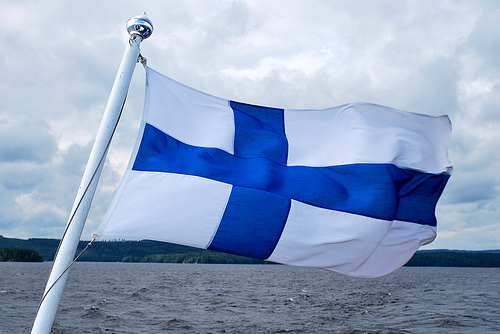January 10, 2013
Finland’s education reforms which were implemented 40 years ago have helped place its school system at the top in all the global rankings for education systems. Despite the differences between Finland and the U.S., it continues to surpass other countries with similar size and demography.
Here is a list of 20 facts about Finland’s education system gleaned from a piece posted in December 2011 by the Business International which we’ve summarized below:
The Students:
1. Children in Finland start school at age 7.
2. Exams and homework don’t occur and if so, rarely, until they are in their teens.
3. The first six years of education is void of any evaluation/measurement assessments.
4. At age 16, children take a mandatory standardized test
5. All children, despite their learning abilities, are taught together in the same classroom. That is, children are not separated by their aptitude. In fact, once the students have completed their schooling, it’s been shown that the difference between the weakest and strongest students is the smallest in the world.
6. Finland spends approximately 30% less per student than the U.S.
7. 93% of Finns graduate from high school which is about 17.5% more than the U.S.
8. 66% of Finnish students go to college which is the highest rate in Europe.
9. 43% of Finnish high school students attend vocational schools.
10. The size of science classes are kept at the maximum of 16 students so that everyone has the opportunity to participate in practical laboratory experiments.
11. Elementary school students in Finland enjoy 75 minutes of recess each school day while their American counterparts receive an average of 27 minutes.
The Teachers
12. Teachers in the Finnish school system spend 4 hours a day in the classroom and are required to take 2 hours a week for “professional development.”
13. Finland has the same amount of teachers as NYC but fewer students, somewhere in the range of 600,000 students compared to 1.1 million in NYC.
14. In Finland the school system is 100% funded by the government.
15. In order to teach in Finland, teachers must have a master’s degree which is fully subsidized.
16. Teachers are selected from the top 10% of university graduates.
17. In 2008, the average starting salary for a Finnish teacher was $29,000 compared with $36,000 in the U.S. But high school teachers with 15 years of experience make 102% of what other university graduates earn compared to the
U.S. where this figure is 62%.
18. Finland does not have merit pay for its teachers.
19. Teachers in Finland are recognized as having the same status as lawyers and doctors.
20. The national curriculum is only broad guidelines and allows the teachers flexibility to design teaching plans.
What lessons can we learn from Finland?
Related article: http://www.smithsonianmag.com/people-places/Why-Are-Finlands-Schools-Successful.html?c=y&page=2

Alan A. Saidi
Sr. VP & COO, ACEI, Inc.
www.acei1.com


What these qualities create is an emotionally safe learning environment which caters for success by providing lots of opportunities for collaboration and social learning. The non-punitive assessment system also increases the perceived meaningfulness of learning – which of course yields students who are intrinsically motivated in learning and thus achieve better learning results. It is like an upward spiral supporting students’ learning.
Thank you, Nina for your comment and for following our blog. What you’ve said is so insightful. I just read a blog on HuffingtonPost http://www.huffingtonpost.com/c-m-rubin/finland-education_b_2468823.html which discusses the reasons why Finland has been so successful in educating its young and how the cultural differences between Finland and the US make it difficult to transfer the Finnish model into the American system. We can only hope that there are some broad lessons our educators within the US educational system may be able to glean and emulate.
Brilliant list – it really brings into the open the degree of differences that places Finland on top.
The danger, however, with such observations as ‘… the difference between the weakest and strongest students is the smallest in the world.’ is that it is a relatively meaningless single statistic. It is only a great statistic if the mean is high. Without that, it is likely that stronger students have been ‘dragged down’ closer to the level of the weaker students. I suspect that the mean is indeed high, and also that the students in general are happy with the mix.
In general, Finland exemplifies so much that is educationally sound practice, but regularly ignored in the UK and US.
Thanks for your comment. I couldn’t agree with you more.